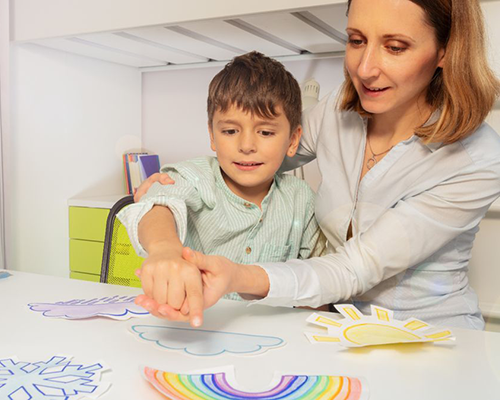How Successful Is ABA Therapy? A Comprehensive Look at Its Effectiveness

Introduction
If you’re a parent or caregiver of a child diagnosed with autism spectrum disorder (ASD), you’ve likely heard of Applied Behavior Analysis (ABA) therapy. It’s one of the most researched and widely practiced treatments for autism. But one question remains for many families: How successful is ABA therapy? A comprehensive look at its effectiveness can help you decide if this approach aligns with your child’s needs and your family’s goals.
In this article, we’ll explore what makes ABA therapy effective, the science behind it, and real-world outcomes that parents and professionals have experienced. Whether you’re new to the autism journey or exploring therapy options, this guide aims to answer your key questions in plain, relatable language.
What Is ABA Therapy?
ABA therapy is a scientific approach to understanding and changing behavior. Rooted in behaviorist theory, it breaks down complex skills into manageable steps and reinforces positive behaviors through repetition, rewards, and structure.
ABA can help children with autism develop a wide range of skills, including:
- Communication (verbal and non-verbal)
- Social interactions
- Academic and cognitive tasks
- Daily living and self-care
- Emotional regulation
Each ABA program is personalized. A Board-Certified Behavior Analyst (BCBA) designs and oversees the plan, while trained therapists (often called RBTs) work directly with the child.
What Does the Research Say?
ABA therapy is supported by decades of research. One of the most well-known studies, conducted by Dr. Ivar Lovaas in 1987, found that nearly 47% of children who received intensive ABA therapy (40 hours per week) for two or more years were able to function similarly to their peers in school and required less support.
Since then, multiple studies have supported the idea that early, intensive ABA therapy can lead to significant improvements in:
- IQ
- Language development
- Adaptive behavior
- Social functioning
However, it’s essential to recognize that outcomes vary based on the child, the intensity of the program, and family involvement.
How Does ABA Therapy Work?
ABA uses several techniques to teach and reinforce skills. Some of the most common include:
1. Discrete Trial Training (DTT)
This method breaks down tasks into simple steps and rewards correct responses.
2. Natural Environment Teaching (NET)
Skills are taught in real-world settings like playtime or mealtime, making them more generalizable.
3. Pivotal Response Training (PRT)
Focuses on “pivotal” behaviors like motivation and response to multiple cues, leading to widespread improvements.
4. Functional Behavior Assessment (FBA)
Used to understand why a child behaves a certain way, allowing therapists to develop strategies that reduce challenging behavior.
What Makes ABA Therapy Successful?
1. Early Intervention
The earlier ABA starts (ideally before age 5), the better the results tend to be. This is because young children’s brains are more adaptable.
2. Consistency
Children benefit from consistent schedules and reinforcement across home, school, and therapy settings.
3. Family Involvement
Parents and caregivers who are trained in ABA techniques can extend learning into everyday routines, amplifying results.
4. Customization
ABA is not one-size-fits-all. Programs tailored to a child’s unique strengths, needs, and preferences tend to be more effective.
Real-Life Success Stories
Many parents have seen ABA therapy dramatically change their child’s abilities and independence.
Sarah, a mother from Austin, TX, shared, “When my son started ABA, he barely spoke a few words. Now, two years later, he talks in full sentences and even makes friends at the park. It’s been life-changing.”
Therapists at KickStart Therapy often witness these transformations firsthand. Children who initially struggle with daily tasks begin to thrive in structured routines, develop confidence, and engage more meaningfully with those around them.
Addressing Common Concerns
ABA therapy, while highly regarded, is not without criticism. Some argue it’s too structured or places too much emphasis on compliance. However, modern ABA has evolved. Today’s approaches are much more child-centered and flexible, focusing on positive reinforcement and respectful engagement rather than rigid routines.
At KickStart Therapy, we emphasize compassionate care and respectful learning tailored to each child’s pace and personality.
How Long Does ABA Therapy Take to Show Results?
Every child is different. Some may show progress within weeks, while others may take months. Factors that influence success include:
- Hours of therapy per week
- The child’s age and developmental level
- The quality and training of therapists
- Involvement of parents and teachers
A typical program may range from 10 to 40 hours per week over 1 to 3 years. Even after formal therapy ends, many skills continue to improve as children grow and generalize what they’ve learned.
Is ABA Therapy Right for Your Child?
ABA therapy is not a magic cure, but for many children, it offers a structured, evidence-based path to improvement. It helps break down overwhelming challenges into teachable moments and builds confidence step-by-step.
If your child struggles with communication, social skills, or daily routines, ABA could be a powerful part of their support plan. Speak with a licensed behavior analyst or schedule an assessment at KickStart Therapy to explore what’s possible.
Conclusion
So, how successful is ABA therapy? A comprehensive look at its effectiveness reveals a therapy model backed by science, refined by decades of practice, and loved by thousands of families. While it may not work the same for every child, many experience meaningful progress in key life areas.
The key to ABA’s success lies in early intervention, individualization, and a dedicated team—including parents—working toward shared goals. With patience and consistency, ABA therapy can help children with autism reach their fullest potential.





